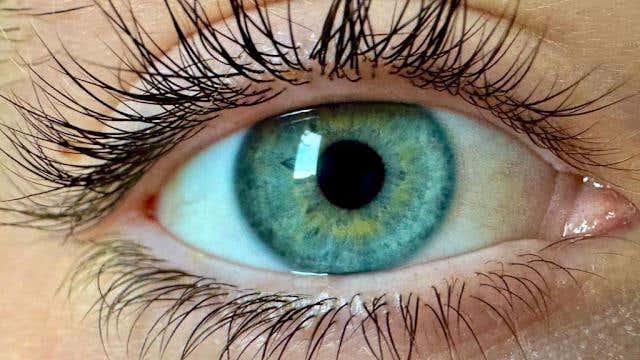New study identifies the cause of ADHD – helping millions worldwide
Attention deficit hyperactivity disorder (ADHD) is a neurodevelopmental condition that affects approximately 5% of children worldwide

According to the WHO, although ADHD has been recognized to have a genetic basis, the specific genes implicated have been challenging to identify. (CREDIT: CC BY-SA 3.0)
Attention deficit hyperactivity disorder (ADHD) is a neurodevelopmental condition that affects approximately 5% of children and 2.5% of adults worldwide, according to the World Health Organization.
It is characterized by inattention, hyperactivity, impulsivity, and difficulty maintaining focus, all of which can significantly impact academic performance, social interactions, and overall daily functioning. Despite its prevalence, the underlying biological mechanisms of ADHD have remained difficult to pinpoint.
Scientists have long recognized that ADHD has a genetic component, but identifying the specific genes responsible has been a challenge. Over the years, numerous studies have suggested a complex interplay of genetic and environmental factors in the disorder’s development. However, recent advancements in genetic research have brought scientists closer to understanding the genetic roots of ADHD.
A team of Israeli researchers has identified a gene, CDH2, that appears to play a significant role in the progression of ADHD. The CDH2 gene encodes N-cadherin, a protein essential for brain synapse activity and formation. Synapses are the junctions between neurons that facilitate communication in the brain, making N-cadherin a crucial factor in normal cognitive and behavioral functioning.
Through their investigation, researchers discovered that a mutation in the CDH2 gene disrupts synaptic activity, leading to alterations in molecular pathways and dopamine levels. Dopamine is a neurotransmitter closely associated with attention, motivation, and impulse control.
The study pinpointed two specific brain regions affected by this disruption: the ventral midbrain and the prefrontal cortex, both of which have been linked to ADHD symptoms.
This breakthrough study was conducted by researchers from Ben-Gurion University of the Negev and Soroka-University Medical Center.
Their findings were published in Nature Communications, a respected peer-reviewed academic journal. The study provides new insights into the biological mechanisms of ADHD and could pave the way for more targeted treatments.
Related Stories:
Using CRISPR technology, the team introduced a specific mutation into corresponding mouse genes, resulting in hereditary hyperactivity. The mice exhibited ADHD symptoms in 15 different behavioral tests, establishing them as a dependable model for investigating the disorder.
“This finding is a major step forward in our understanding of the genetic basis of ADHD,” said Prof. Ohad Birk, one of the authors of the study. “In addition to the scientific importance of finding a clear delineation of a novel genetic basis and molecular pathways for ADHD, both the mutant human cells and the mouse strain carrying the human mutation can serve as an effective model system for the discovery of novel medications for ADHD."
The study could have significant implications for the treatment and management of ADHD. While the disorder is typically treated with medication, such as stimulants and non-stimulants, these can have significant side effects, including decreased appetite, insomnia, and mood swings. The discovery of CDH2 as a key gene involved in ADHD could lead to the development of more targeted and effective treatments.
Further studies have already been initiated by the Birk team at BGU’s National Institute for Biotechnology in the Negev (NIBN), to explore the molecular pathways involved in ADHD and to develop new treatments based on this knowledge.
The team is also working to identify other genes involved in ADHD, and to understand how environmental factors may interact with genetic predisposition to affect the development of the disorder.
While the discovery of CDH2 as a key gene involved in ADHD is a significant breakthrough, it is unlikely to be the only gene involved. ADHD is a complex disorder that likely has multiple genetic and environmental causes, and further research will be needed to fully understand its development and progression.
Symptoms of ADHD
Some people with ADHD have fewer symptoms as they age, but some adults continue to have major symptoms that interfere with daily functioning, according to the Mayo Clinic. In adults, the main features of ADHD may include difficulty paying attention, impulsiveness and restlessness. Symptoms can range from mild to severe.
Many adults with ADHD aren't aware they have it — they just know that everyday tasks can be a challenge. Adults with ADHD may find it difficult to focus and prioritize, leading to missed deadlines and forgotten meetings or social plans.
The inability to control impulses can range from impatience waiting in line or driving in traffic to mood swings and outbursts of anger.
Adult ADHD symptoms may include:
- Impulsiveness
- Disorganization and problems prioritizing
- Poor time management skills
- Problems focusing on a task
- Trouble multitasking
- Excessive activity or restlessness
- Poor planning
- Low frustration tolerance
- Frequent mood swings
- Problems following through and completing tasks
- Hot temper
- Trouble coping with stress
What's typical behavior and what's ADHD?
Further from the Mayo Clinic, almost everyone has some symptoms similar to ADHD at some point in their lives. If your difficulties are recent or occurred only occasionally in the past, you probably don't have ADHD.
ADHD is diagnosed only when symptoms are severe enough to cause ongoing problems in more than one area of your life. These persistent and disruptive symptoms can be traced back to early childhood.
Diagnosis of ADHD in adults can be difficult because certain ADHD symptoms are similar to those caused by other conditions, such as anxiety or mood disorders. And many adults with ADHD also have at least one other mental health condition, such as depression or anxiety.
Note: Materials provided above by The Brighter Side of News. Content may be edited for style and length.
Like these kind of feel good stories? Get The Brighter Side of News' newsletter.
Joseph Shavit
Head Science News Writer | Communicating Innovation & Discovery
Based in Los Angeles, Joseph Shavit is an accomplished science journalist, head science news writer and co-founder at The Brighter Side of News, where he translates cutting-edge discoveries into compelling stories for a broad audience. With a strong background spanning science, business, product management, media leadership, and entrepreneurship, Joseph brings a unique perspective to science communication. His expertise allows him to uncover the intersection of technological advancements and market potential, shedding light on how groundbreaking research evolves into transformative products and industries.



